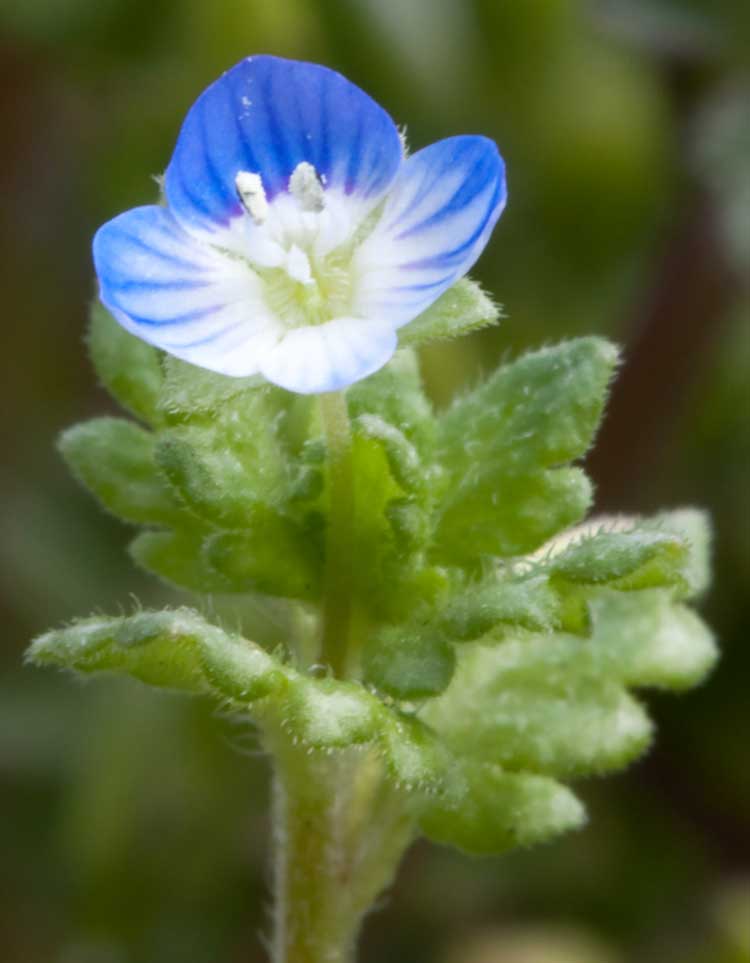
Veronica persica
Classification System: APG IV
Superregnum: Eukaryota
Regnum: Plantae
Cladus: Angiosperms
Cladus: Eudicots
Cladus: Core eudicots
Cladus: Asterids
Cladus: Lamiids
Ordo: Lamiales
Familia: Plantaginaceae
Tribus: Veroniceae
Genus: Veronica
Subgenus: V. subg. Pocilla
Species: Veronica persica
Name
Veronica persica Poir., 1808
Synonyms
Homotypic
Cardia filiformis Dulac, Fl. Hautes-Pyr. : 389 (1867), nom. illeg.
Pocilla persica (L.) Fourr., Ann. Soc. Linn. Lyon sér. 2, 17: 129 (1869).
Heterotypic
Cochlidiosperma buxbaumii Opiz, Seznam : 31 (1852).
Veronica agrestis var. byzantina Sibth. & Sm., Fl. Graec. (J.Sibthorp & J.E.Smith) 1: t. 8 (1806).
Veronica areolata Colenso, Trans. & Proc New Zealand Inst., 24: 392 (1892).
Veronica buxbaumii Ten., Fl. Nap., 1 : Prodr. : 7. 1811,1815, nom illeg. non F.W.Schmidt (1791).
Veronica byzantina (Sibth. & Sm.) Degen, in?
Veronica byzantina (Sibth. & Sm.) Britton, Sterns & Poggenb., Prelim. Cat. 40 (1888).
Veronica byzantina Mazziari, 1934, nom. illeg.
Veronica buxbaumii var. kochiana Godr., Fl. Lorraine, 2: 164 (1843).
Veronica diffusa Raf., New Fl. N. Amer., 4: 38 (1838).
Veronica filiformis DC., Fl. Franc. (Candolle & Lamarck), ed. 3. 6: 388 (1815), nom illeg. non Sm. (1791).
Veronica hospita Mert. & W.D.J.Koch, Deutschl. Fl., 1: 332 (1823).
Veronica persica subsp. corrensiana (Lehm.) Stroh, Beih. Bot. Centralbl. 61B: 422? (1942).
Veronica persica var. aschersoniana (Lehm.) B.Boivin, Naturaliste Canad. 79: 174 (1952).
Veronica persica var. corrensiana (Lehm.) B.Boivin, Naturaliste Canad. 79: 174 (1952).
Veronica tournefortii C.C.Gmel., Fl. Bad. 1: 39 (1805), nom. illeg. non Vill. (1779).
Veronica tournefortii subsp. aschersoniana Lehm., Oesterr. Bot. Z. 59: [249], fig. 4. 1909.
Veronica tournefortii subsp. corrensiana Lehm., Oesterr. Bot. Z. 59: 249, fig. 1909.
Veronica tournefortii subsp. restrictior P.Fourn., Monde Pl. 34: 12–13 (1933).
Veronica tournefortii var. aschersoniana (Lehm.) Hayek & Hegi, Ill. Fl. Mitt.-Eur. (Hegi) 6, 1: 53 (1913).
Veronica tournefortii var. corrensiana (Lehm.) Hayek & Hegi, Ill. Fl. Mitt.-Eur. 6, 1: 53 (1913).
References
Poiret, J.L.M. 1808. Encycl. 8: 542.
USDA, ARS, Germplasm Resources Information Network. Veronica persica in the Germplasm Resources Information Network (GRIN), U.S. Department of Agriculture Agricultural Research Service. Accessed: 09-Oct-10.
Vernacular names
العربية: زهرة الحواشي الفارسية
azərbaycanca: Veronica byzantina, Veronica tournefortii
čeština: Rozrazil perský
Cymraeg: Rhwyddlwyn y maes
dansk: Storkronet Ærenpris
Deutsch: Persischer Ehrenpreis
English: Persian speedwell, large field Speedwell, bird's-eye
eesti: Pärsia mailane
فارسی: سیزاب ایرانی
suomi: Persiantädyke
français: Veronique de Perse, Véronique de Perse, Véronique commune
hornjoserbsce: Zahrodny rozraz, Persiski rozraz
magyar: Perzsa veronika
日本語: オオイヌノフグリ
한국어: 큰개불알풀
Nederlands: Grote Ereprijs
polski: Przetacznik perski
português: verónica-da-pérsia
Runa Simi: Hatun ch'iwa, Puna mikhurana
русский: Вероника персидская
svenska: Trädgårdsveronika
українська: Вероніка персидська
中文: 阿拉伯婆婆纳
Veronica persica (common names: birdeye speedwell,[1] common field-speedwell,[2] Persian speedwell, large field speedwell, bird's-eye, or winter speedwell) is a flowering plant in the family Plantaginaceae. It is native to Eurasia and is widespread as an introduced species in the British Isles (where it was first recorded in 1825[3]), North America, eastern Asia, including Japan and China, and Australia and New Zealand.
Description
Unripe fruit of V. persica
Veronica persica is an annual or winter annual herb that reproduces from seed.
Its cotyledons are triangular with truncated bases. The short-stalked leaves are broadly ovate with coarsely serrated margins, and measure one to two centimetres (0.4 to 0.8 in) long. The leaves are paired on the lower stem and are alternately arranged on the upper parts. The plant has weak stems that form a dense, prostrate groundcover. The tips of stems often grow upright.
The flowers are roughly one centimetre (0.4 in) wide[4] and are sky-blue with dark stripes and white centers. They are zygomorphic, having only one vertical plane of symmetry. They are solitary on long, slender, hairy stalks in the leaf axils.
The seeds are transversely rugose and measure between one and two millimetres (0.04 and 0.08 in) long. There are five to 10 seeds per locule in the fruit.[5]
Veronica persica can be distinguished from similar species by its heart-shaped fruit with two widely-separated lobes.[3][4][5]
Horticultural uses
Although many species in the genus are used in gardens (such as V. exalta, V. incana, V. gentianoides, V. longifolia, V. perfoliata, and V. spicata),[6] this species is generally seen as a weed[7] and has no known horticultural uses.
Herbal medicine
Afghani herbalist, Mahomet Allum, used the plant to treat patients with heart trouble, in Adelaide, Australia, in the mid-20th century.[8] It is also used for snakebite treatment, hemorrhaging, rheumatoid arthritis, asthma, and as an expectorant.[9]
References
"Veronica persica". Natural Resources Conservation Service PLANTS Database. USDA. Retrieved 29 July 2015.
BSBI List 2007 (xls). Botanical Society of Britain and Ireland. Archived from the original (xls) on 2015-06-26. Retrieved 2014-10-17.
Blamey, M., et al. 2003. Wild flowers of Britain and Ireland: The Complete Guide to the British and Irish Flora. A & C Black, London.
Rhoads, A. F. and T. A. Block. Plants of Pennsylvania: An Illustrated Manual, 2nd ed. University of Pennsylvania Press, Philadelphia. 2007.
Gleason, H. A. and A. Cronquist. Manual of Vascular Plants of Northeastern United States and Adjacent Canada, 2nd ed. New York Botanical Gardens, New York, New York. 1991.
Thomas, G. S. Perennial Garden Plants or the Modern Florilegium, 2nd ed. J. M. Dent and Sons, London. 1992.
Veronica persica. USDA Plants Database.
Amirul Husni Affifudin (2018). "Historical Archaeology Report: Mahomet Allum Khan". doi:10.13140/RG.2.2.23125.27365. [unreliable source?]
Salehi, Bahare; Shivaprasad Shetty, Mangalpady; V. Anil Kumar, Nanjangud; Živković, Jelena; Calina, Daniela; Oana Docea, Anca; Emamzadeh-Yazdi, Simin; Sibel Kılıç, Ceyda; Goloshvili, Tamar; Nicola, Silvana; Pignata, Giuseppe; Sharopov, Farukh; del Mar Contreras, María; C. Cho, William; Martins, Natália; Sharifi-Rad, Javad (4 July 2019). "Veronica Plants—Drifting from Farm to Traditional Healing, Food Application, and Phytopharmacology". Molecules. 24 (13): 2454. doi:10.3390/molecules24132454. PMC 6651156. PMID 31277407.
Retrieved from "http://en.wikipedia.org/"
All text is available under the terms of the GNU Free Documentation License

